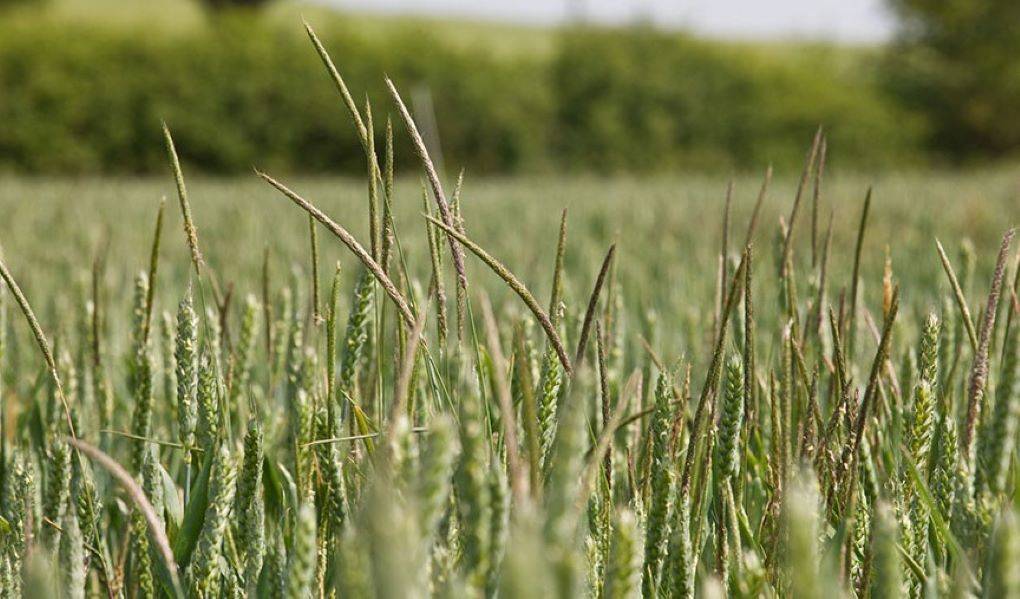
Farmers all around Europe are fighting a losing struggle against blackgrass. This annual grass, native to Eurasia and prospering in damp meadows and deciduous forests, has infiltrated cultivated land, growing densely and competing with crops like wheat or barley, reducing harvest yield significantly.
The decades-long practice of controlling this weed using herbicides that target specific proteins in the plant has resulted in an alarming growth in herbicide resistance: blackgrass is projected to generate about half a billion euros in annual damage in the United Kingdom alone. Its quick adaptation to herbicides threatens to outrun chemical weed control technologies.
A group of scientists led by Detlef Weigel's Department for Molecular Biology at the Max Planck Institute for Biology Tübingen (Germany) and Karl Schmid's Department for Crop Biodiversity and Breeding Informatics at the University of Hohenheim (Stuttgart, Germany) has studied the evolutionary mechanisms that lead to resistance. The two most often used herbicides against blackgrass inhibit the action of one of two proteins that are both required for the weed to thrive.
To combat the poisons, blackgrass has developed various tactics, including as metabolizing them to prevent them from reaching the proteins they are supposed to disable. Plants with this sort of resistance are nevertheless sensitive to higher pesticide dosages. Worse, and considerably more common, is so-called target-site resistance: a modification directly in the gene encoding the targeted proteins can render the plant resistant to even high quantities of the herbicide.
The rapid emergence of these target-site resistances prompted the researchers to consider the role of newly occurring mutations vs variants that were already existing in a population prior to herbicide exposure. "From farmers, we learned that herbicide resistant blackgrass is also a problem around Tübingen, and we were able to collect our first samples with the kind help of local farmers," says first author Sonja Kersten, whose Ph.D. project laid the groundwork for the study.
"However, we quickly realized that we could only learn so much from our own, limited collection." We were fortunate to collaborate with colleagues from BASF Agricultural Solutions, who already had blackgrass samples from across the continent, allowing us to broaden the scope of the study to a European scale."
BASF benefited as well, because knowing genomes like those of blackgrass allows them to develop stewardship measures that can contribute to the long-term usage of herbicide products. Genetic variation sheds light on evolutionary history. The researchers created a reference genome of blackgrass—an idealized representation of the DNA sequence used as a baseline for comparison in genetic studies—and studied the genetic structure of resistant populations.
"The variation we found in most resistant populations indicates that the spread of resistances is the result of pre-existing gene variants, and only to a lesser extent of spontaneous mutations," explains senior author Fernando Rabanal. "Typically, when an evolutionary advantage arises from a spontaneous mutation, we see a certain decrease in genetic variation across the population—but this was not the case here." The researchers matched their actual data to simulations of several adaptation scenarios, indicating that the target-site resistance mutations were most likely existing before herbicides began to exert selective pressure.
To obtain their findings, the researchers sequenced the genes encoding the targeted proteins as well as their surrounding areas with great accuracy using what biologists call long-read amplicons. However, they were confronted with the challenge of processing hundreds of individual plants, a time-consuming and costly endeavour.
As a result, Kersten, Rabanal, and Weigel devised a gene sequencing process that enables them to analyse more than 100 individuals from a single DNA extraction without sacrificing much of the original precision. They used samples received from Agris42, a Stuttgart-based company that develops physiological resistance tests for farmers and industrial partners, to apply their method to 64 field populations across Germany.
This collection could be a helpful resource for tracking the incidence of resistances, especially since simulations included in the study show that resistant gene variants, even the rarer ones, can remain in untreated areas for decades. In terms of immediate practical implications, the authors state that management plans should not rely just on herbicides, but should also "integrate mechanical weed management and crop rotation, to keep the incidence of weeds in the field continuously low."









